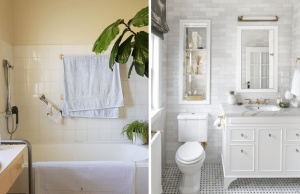
That sudden, unwelcome chill that creeps into a specific room, despite your thermostat diligently working away, isn’t just a minor annoyance. It’s your home whispering – or perhaps shouting – about significant energy inefficiencies. Drafty rooms are more than just uncomfortable; they’re red flags indicating valuable energy dollars are escaping, your comfort is compromised, and potentially, your home’s structural integrity is at risk. Recognizing these drafty signals and understanding their root causes is the first step towards a more energy-efficient and comfortable living space, and sometimes, the answer lies in considering window replacement.
The Science Behind the Draft: How Air Leaks Impact Energy Efficiency
To understand why a drafty room is an energy drain, let’s delve into the basics of heat transfer. Your home’s heating and cooling systems work hard to maintain a comfortable temperature. This conditioned air should ideally stay within your living spaces. However, drafts create pathways for this treated air to escape and for unconditioned outside air to seep in. This constant exchange forces your furnace or air conditioner to work harder and longer to compensate, directly translating to higher energy consumption and inflated utility bills. In fact, studies have shown that air leaks can account for a significant percentage of a home’s total energy loss, making addressing them a crucial step in improving efficiency, and for older homes, window replacement might be a key component of this.
Common Culprits: Where Drafts Typically Originate
Drafts can be insidious, sneaking in through seemingly small openings. Identifying the common culprits is essential for effective remediation:
Windows and Doors:
These are prime suspects. Cracked or missing caulk and weather stripping create obvious pathways for air. Poor seals around the frames, warped frames, and outdated single-pane glass offer little resistance to temperature transfer and air infiltration. In many cases, window replacement with energy-efficient models is the most effective long-term solution.
Attic:
Often overlooked, the attic is a major source of energy loss. Unsealed penetrations for wiring, plumbing, and ductwork act like chimneys for air. Insufficient insulation allows heat to escape in winter and enter in summer. Even a leaky attic hatch can contribute significantly to drafts.
Basement and Crawl Spaces:
Cracks in foundation walls, gaps around pipes and wiring, and uninsulated rim joists (where the foundation meets the floor joists) can allow cold, damp air to infiltrate your home.
Walls and Ceilings:
While less obvious, drafts can occur through gaps around electrical outlets and light fixtures. Poorly sealed ductwork running through walls and ceilings can also leak conditioned air into unconditioned spaces.
Fireplace:
An open fireplace damper is a direct invitation for drafts. Even a closed damper that isn’t properly sealed can allow significant air leakage.
The Ripple Effect: Beyond Just Feeling Cold
The consequences of drafty rooms extend far beyond a mere chill. These energy leaks trigger a cascade of negative effects:
Higher Energy Bills:
This is the most direct and noticeable impact. Your HVAC system works overtime to compensate for the lost conditioned air.
Uneven Temperatures:
Drafts create uncomfortable hot and cold spots throughout your home, making it difficult to maintain a consistent and comfortable environment.
Strain on HVAC Systems:
The constant demand on your furnace and air conditioner can lead to premature wear and tear, increasing the likelihood of costly repairs and a shortened lifespan.
Moisture Problems and Mold Growth:
Air leaks can introduce humid outdoor air into your home, leading to condensation, especially in cooler areas. This excess moisture creates an ideal breeding ground for mold and mildew, impacting indoor air quality and potentially causing health issues.
Reduced Comfort and Air Quality:
Drafts can carry dust, allergens, and pollutants into your home, further compromising indoor air quality and overall comfort.
Detective Work: Identifying and Locating Drafts
Finding the source of drafts doesn’t require sophisticated equipment. You can start with some simple detective work:
The “Hand Test”:
On a cold or windy day, simply move your hand slowly around windows, doors, baseboards, electrical outlets, and other potential leak areas. You’ll likely feel a noticeable current of air where drafts exist.
The Candle/Smoke Test:
Carefully hold a lit candle or a stick of incense near suspected draft sources. The flame or smoke will flicker or waver in the presence of airflow.
The Tissue Paper Test:
Similar to the candle test, hold a piece of lightweight tissue paper near potential leak areas and observe if it moves.
Professional Energy Audit:
For a more comprehensive assessment, consider a professional energy audit. Certified auditors use specialized tools like blower door tests (which depressurize your home to identify air leaks) and thermal imaging cameras (which visualize temperature differences) to pinpoint even hidden drafts.
Taking Action: Sealing Those Sneaky Drafts
Once you’ve identified the culprits, it’s time to take action. Solutions range from simple DIY fixes to more significant professional upgrades:
DIY Solutions:
Caulking and weather stripping are cost-effective ways to seal gaps around windows and doors. Expanding foam can fill larger cracks and openings. Window film can add an extra layer of insulation to single-pane windows. Draft stoppers placed at the bottom of doors can block airflow.
Professional Upgrades:
For more significant and long-lasting improvements, consider professional upgrades. Window replacement with energy-efficient, double or triple-paned windows with low-E coatings can dramatically reduce heat transfer and air infiltration. Upgrading insulation in your attic, walls, and basement is crucial for preventing heat loss and gain. Duct sealing ensures that the conditioned air produced by your HVAC system reaches its intended destination without leaking. Insulating your attic hatch is another often-overlooked but effective measure.
Long-Term Benefits of an Energy-Efficient Home
Investing in sealing drafts and improving your home’s energy efficiency yields significant long-term benefits:
Lower Utility Bills:
This is the most tangible reward, with noticeable savings on your heating and cooling costs year after year.
Improved Comfort:
Eliminating drafts creates a more consistently comfortable and enjoyable living environment.
Extended Lifespan of HVAC Equipment:
By reducing the workload on your furnace and air conditioner, you can prolong their lifespan and avoid premature replacement costs.
Healthier Indoor Air Quality:
Sealing air leaks helps prevent the entry of dust, allergens, and pollutants, contributing to a healthier indoor environment.
Increased Home Value:
Energy-efficient homes are increasingly attractive to buyers and can command a higher resale value.
Reduced Carbon Footprint:
By using less energy, you contribute to a more sustainable environment and reduce your carbon footprint.
Drafty rooms are more than just a nuisance; they are clear indicators of energy inefficiency that impact your wallet, comfort, and even the health of your home. By understanding the science behind drafts, identifying their common sources, and taking proactive steps to seal them – which may very well include considering window replacement for older or inefficient units – you can transform your home into a more comfortable, energy-efficient, and cost-effective haven. Don’t ignore those chilly whispers; act today and reap the rewards of a truly energy-efficient home. Consider scheduling an energy audit or starting with simple DIY fixes to begin your journey towards a draft-free and efficient living space.








